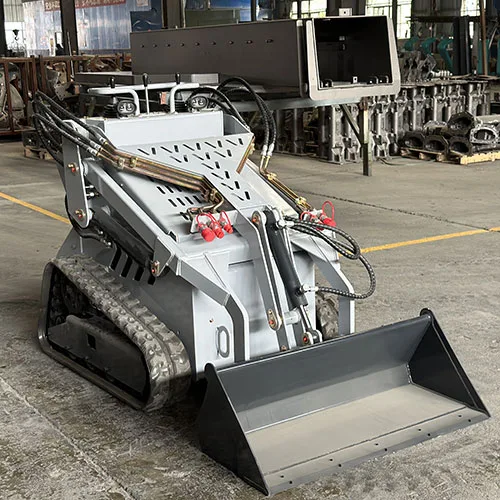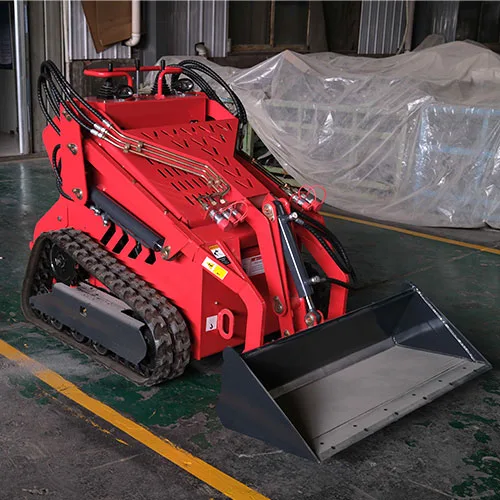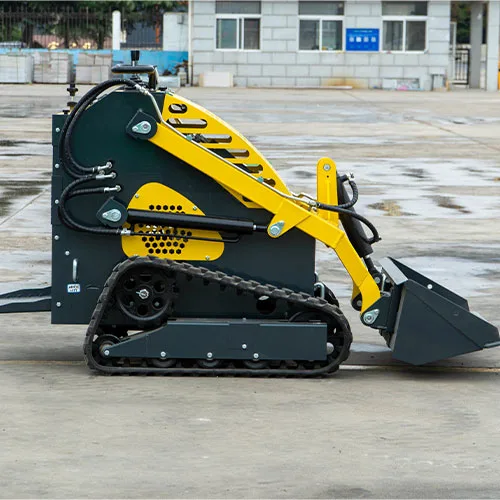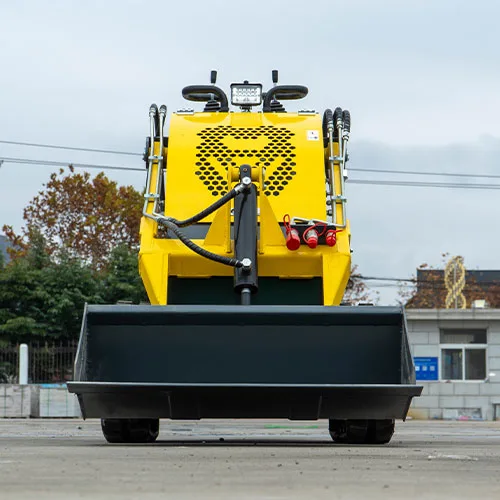Welcome to My Blog!
Before we dive into the content, I’d love for you to join me on my social media platforms where I share more insights, engage with the community, and post updates. Here’s how you can connect with me:
Facebook:https://www.facebook.com/people/Shandong-Huaying-International-Trade-CoLtd/61569380364327/
Now, let’s get started on our journey together. I hope you find the content here insightful, engaging, and valuable.
Table of Contents
Introduction

Skid steer loaders are versatile machines used in various industries, including construction, agriculture, landscaping, and demolition. Their compact size and maneuverability make them ideal for working in tight spaces. However, with so many different models and attachments available, it can be challenging to choose the right skid steer loader equipment for your needs. This blog post will provide you with a comprehensive guide to help you make the best decision.
What is Skid Steer Loader Equipment?
A skid steer loader is a rigid frame machine with lift arms used to attach various tools or attachments. Its unique steering system, where the wheels on each side operate independently, allows it to “skid” or turn within its footprint. This maneuverability makes it exceptionally useful in confined areas.
Key Components of Skid Steer Loader Equipment
Understanding the core components is crucial in choosing the right equipment:
- Engine: The engine provides the power for the machine. Consider horsepower and fuel efficiency.
- Hydraulic System: This powers the lift arms and attachments. Flow rate and pressure are key factors.
- Tires/Tracks: Tires are suitable for hard surfaces, while tracks offer better traction on soft or uneven terrain.
- Attachments: A wide variety of attachments extend the functionality of a skid steer loader.
Understanding Skid Steer Loader Specifications


When selecting skid steer loader equipment, pay close attention to the following specifications:
- Operating Capacity: This is the maximum weight the loader can safely lift.
- Tipping Load: The weight at which the loader will tip over. Operating capacity is typically 50% of the tipping load.
- Lift Height: The maximum height the loader can lift a load.
- Breakout Force: The force exerted by the bucket to break out material.
Matching Specifications to Your Needs
Consider the typical tasks you’ll be performing. For heavy lifting, prioritize operating capacity and breakout force. For tasks requiring reaching high places, focus on lift height.
Choosing the Right Skid Steer Loader Attachments
The versatility of skid steer loaders comes from the wide range of available attachments. Here are some of the most common ones:
- Buckets: Used for digging, carrying, and dumping materials.
- Forks: Used for lifting pallets and other materials.
- Augers: Used for drilling holes in the ground.
- Grapples: Used for grabbing and moving materials.
- Brooms: Used for sweeping and cleaning surfaces.
Selecting Attachments for Specific Tasks
Consider the tasks you will be performing and choose attachments that are appropriate for those tasks. For example, if you will be doing a lot of digging, you will need a bucket. If you will be doing a lot of lifting, you will need forks.
Skid Steer Loader Equipment Maintenance and Safety
Proper maintenance is crucial for keeping your skid steer loader equipment in good working condition. This includes regular inspections, fluid changes, and lubrication.
Essential Maintenance Practices
- Regular Inspections: Check for wear and tear, loose parts, and fluid leaks.
- Fluid Changes: Change engine oil, hydraulic fluid, and coolant according to the manufacturer’s recommendations.
- Lubrication: Grease all moving parts regularly.
Key Safety Precautions
- Operator Training: Ensure all operators are properly trained and certified.
- Pre-Operation Checks: Conduct a thorough inspection before each use.
- Safe Operating Procedures: Follow all safety guidelines and best practices.
Comparing Skid Steer Loader Track and Tire Options
Choosing between tracks and tires depends on the operating environment and application:
Advantages and Disadvantages of Tracks
- Advantages: Superior traction on soft or uneven terrain, better stability.
- Disadvantages: Higher maintenance costs, lower speed on hard surfaces.
Advantages and Disadvantages of Tires
- Advantages: Lower maintenance costs, higher speed on hard surfaces.
- Disadvantages: Less traction on soft or uneven terrain.
Matching Tracks/Tires to Operating Conditions
For muddy, sandy, or uneven terrain, tracks are generally preferred. For paved surfaces and applications requiring higher speed, tires are a better choice.
Skid Steer Loader Equipment Table: Key Considerations

This table summarizes key factors to consider when choosing skid steer loader equipment:
| Factor | Consideration | Impact |
|---|---|---|
| Operating Capacity | Weight of typical loads to be lifted | Determines the size and power of the machine required |
| Lift Height | Maximum height materials need to be lifted | Impacts the reach and versatility of the machine |
| Terrain | Type of ground the machine will be operating on (e.g., mud, sand, concrete) | Influences the choice between tracks and tires |
| Attachments | Specific tasks to be performed | Determines the necessary tools and functionality of the machine |
| Budget | Initial purchase price and ongoing maintenance costs | Guides the selection of appropriate features and capabilities within financial constraints |
| Maintenance | Level of maintenance required and availability of service and parts | Impacts long-term operating costs and downtime |
| Emissions | Compliance with local emissions regulations and environmental considerations | Determines the engine type and any required aftertreatment systems |
| Operator Comfort | Ergonomics, controls, and visibility for the operator | Affects operator productivity, safety, and fatigue |
| Jobsite Access | Size and maneuverability of the machine in relation to the workspace | Dictates the machine’s ability to navigate tight spaces and access confined areas |
| Application | Specific industry or task the machine will be used for (e.g., construction, agriculture) | Guides the selection of appropriate features, attachments, and performance characteristics for the job |
Conclusion
Choosing the right skid steer loader equipment requires careful consideration of your specific needs and operating conditions. By understanding the key specifications, attachments, and maintenance requirements, you can make an informed decision and select the best equipment for your business. Remember to prioritize safety and operator training to ensure efficient and productive operations.
FAQ
What is the most common use for a skid steer loader?
Skid steer loaders are incredibly versatile and used in a wide range of applications. Common uses include construction (earthmoving, demolition), landscaping (grading, material handling), agriculture (feeding livestock, cleaning barns), and snow removal.
What is the difference between a skid steer loader and a compact track loader?
The main difference is the undercarriage. Skid steers have wheels, while compact track loaders have tracks. Tracks offer better traction and stability on soft or uneven terrain, while tires are better suited for hard surfaces.
Do you need a special license to operate a skid steer loader?
While a specific “skid steer license” doesn’t exist in most areas, proper training and certification are highly recommended and often required by employers. OSHA (Occupational Safety and Health Administration) in the U.S. has guidelines regarding operator training.
How do you maintain a skid steer loader?
Regular maintenance includes daily inspections (checking fluids, tires/tracks, and attachments), regular fluid changes (engine oil, hydraulic fluid, coolant), lubrication of moving parts, and filter replacements. Consult the manufacturer’s manual for specific maintenance schedules.
What is the operating capacity of a skid steer loader?
Operating capacity refers to the maximum weight a skid steer loader can safely lift. It’s typically around 50% of the tipping load (the point at which the machine would tip over). This varies greatly depending on the model, from a few hundred pounds to several thousand.




